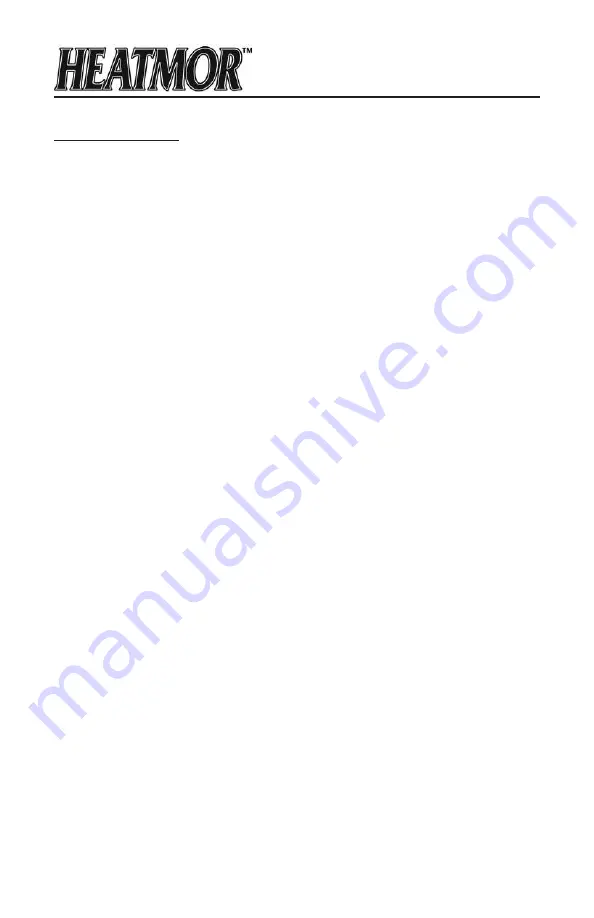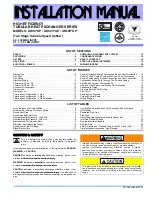
29
Rev. 05/2020
What Should I Burn?
This furnace is designed to burn well-seasoned cordwood.
Well seasoned wood is wood that has been properly prepared for combustion. Proper
seasoning is generally accepted to be wood that has been harvested, split if necessary, and
stored for a reasonable amount of time.
The most efficient preparation will result in a wood moisture content of 20 percent to 30
percent. If the moisture content is more than 30 percent a significant amount of recoverable
heat will be utilized in “boiling” off the water in the wood which escapes as steam. This loss
will accelerate as the moisture content increases. Wood that is too dry will combust too
rapidly, thereby increasing heat and fuel loss out of the stack.
Our experience indicates that piece diameters of 6 to 8 inches are preferable. Larger
pieces (up to 10 inch diameter) will perform well as long as they are properly seasoned.
Fortunately, the combustion process will “see” a mix so that larger/smaller and damper/drier
wood combinations can still provide a good result.
Learn to load the furnace to most appropriately match the heat demand. Warmer outdoor
temperatures indicate a need for smaller loads, thereby matching demand to supply and
resulting in higher efficiencies. Being aware that your individual “Types of Wood” will aid in
your decisions.
Why does my stove not relight?
When the temperature of the Heat Transfer Fluid (HTF) has reached its set limit (185
degrees Fahrenheit), the combustion air blower(s) shut off. At this point, the fire is
surpressed. When the air combustion blower(s) turn back on, there may not be enough
coals to restart the fire. You will then need to restart the fire. If this situation continues to
occur, you may want to transfer to your back up system for better efficiency.
A new unit will require the establishment of “bed of coals” which will aid in re-establishing
proper combustion. This may take a few burn cycles.
















































